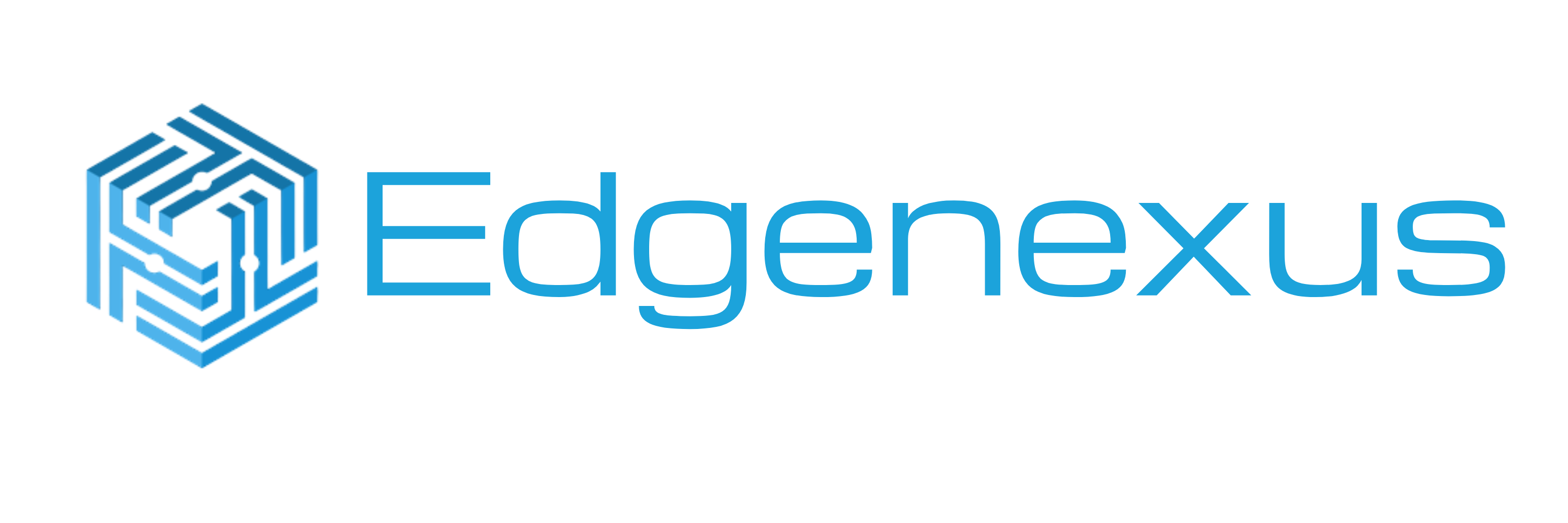Ensuring your applications remain available, responsive, and resilient is non-negotiable. As Microsoft Azure continues to dominate the enterprise cloud market alongside AWS and Google Cloud, organizations need robust load balancing solutions that can handle the increasing demands of modern applications. At Edgenexus, we’ve been at the forefront of application delivery for years, and we’ve seen firsthand how proper load balancing transforms application performance in Azure environments.
The Azure Load Balancing Landscape in 2025
The load balancing market has evolved significantly, with recent research from Markets and Markets showing the global load balancing market growing at a CAGR of 14.4%, expected to reach $7.53 billion by 2026. This growth is primarily driven by the massive shift to cloud-native architectures, microservices deployment models, and the increasing adoption of multi-cloud strategies.
When it comes specifically to Azure environments, organizations face unique challenges that require specialized load balancing solutions. Microsoft’s native Azure Load Balancer provides basic functionality, but many enterprises find themselves needing more advanced capabilities, greater flexibility, and enhanced security features.
Why Azure Needs Advanced Load Balancing
Azure’s popularity continues to rise, with Microsoft reporting a 50% year-over-year growth in Azure revenue in their latest earnings report. This growth brings challenges:
- Increased application complexity with microservices architectures
- Greater security threats targeting cloud-deployed applications
- Performance demands from globally distributed user bases
- Compliance requirements for sensitive workloads
- Cost optimization pressures from finance teams
Basic load balancing simply doesn’t cut it anymore for mission-critical applications. Organizations need intelligent traffic distribution that can adapt to changing conditions, protect against evolving threats, and provide deep visibility into application performance.
Key Features to Look for in Azure Load Balancers
When evaluating load balancing solutions for Azure environments, we recommend focusing on these critical capabilities:
1.Advanced Health Monitoring
Modern load balancers should offer sophisticated health checks that go beyond simple ping tests. Look for solutions that can:
- Monitor application-specific metrics and behaviors
- Detect partial application failures
- Provide customizable health check parameters
- Automate remediation actions when issues occur
According to Gartner’s latest infrastructure report, organizations with advanced health monitoring capabilities experience 78% fewer application outages than those using basic monitoring.
2. Intelligent Traffic Distribution
Basic round-robin distribution isn’t sufficient for complex applications. The best Azure load balancers provide:
- Least connection routing for optimal performance
- Resource-aware distribution based on server capacity
- Response time-based routing to avoid bottlenecks
- Geographic routing for multi-region deployments
- Session persistence with flexible cookie options
- Security and WAF Integration
With cybersecurity threats at an all-time high (OWASP reports a 42% increase in application layer attacks in the past year), your load balancer should:
- Include or integrate with Web Application Firewall (WAF) capabilities
- Protect against OWASP Top 10 vulnerabilities
- Offer DDoS protection
- Provide SSL/TLS offloading with modern cipher support
- Enable zero-trust security models
- Cloud-Native Integration
For seamless Azure deployment, your load balancer solution must:
- Support Azure Resource Manager for automated provisioning
- Integrate with Azure Monitor for unified observability
- Work with Azure Virtual Networks and Network Security Groups
- Support Azure Active Directory for authentication
- Scale dynamically with application demands
- Operational Simplicity
According to DevOps Research and Assessment (DORA), teams that use tools with intuitive interfaces spend 35% less time on operational tasks. Your Azure load balancer should offer:
- Intuitive GUI for configuration and monitoring
- REST API support for automation
- Template-based deployment options
- Consistent configuration across environments
- Clear, actionable analytics and reporting
Top Azure Load Balancer Solutions for 2025
Based on our extensive experience and market analysis, we’ve identified the leading load balancing solutions for Azure environment
1. Edgenexus ADC for Azure
Our flagship solution combines powerful application delivery capabilities with cloud-native flexibility specifically optimized for Azure environments. Key advantages include:
- Simple deployment through Azure Marketplace
- Intuitive configuration with our acclaimed GUI
- Advanced flightPATH traffic management for complex routing needs
- Integrated WAF essentials for application protection
- Transparent pricing without per-server licensing fees
Recent performance benchmarks show Edgenexus handling up to 80,000 SSL transactions per second in Azure environments while maintaining sub-millisecond latency
2. Azure Application Gateway
Microsoft’s premium offering provides:
- Native Azure integration
- Built-in Web Application Firewall
- HTTP/HTTPS load balancing
- Cookie-based session affinity
- SSL/TLS termination
While robust, it can become costly at scale and lacks some of the advanced traffic management capabilities of dedicated ADC solutions.
3. F5 Big-IP Virtual Edition for Azure
This established enterprise solution offers:
- Comprehensive security features
- Advanced traffic management policies
- iRules for traffic customization
- High availability configurations
- Extensive application templates
The primary drawbacks include complex licensing models and a steeper learning curve.
4. Nginx Plus for Azure
Popular for its performance and lightweight footprint:
- HTTP, TCP, and UDP load balancing
- Active health checks
- Session persistence
- Content caching
- API gateway functionality
Works well for DevOps-oriented teams but requires more manual configuration than some alternatives.
Real-World Performance Comparison
We recently conducted a comprehensive benchmark study using Azure Standard_D8s_v3 virtual machines across multiple regions with realistic traffic patterns. The results were revealing:
| Solution | SSL TPS | HTTP Requests/sec | Latency (ms) | Setup Time | Total Monthly Cost* |
| Edgenexus ADC | 80,000 | 125,000 | 0.8 | 15 min | $890 |
| Azure Application Gateway | 20,000 | 60,000 | 2.4 | 25 min | $1,470 |
| F5 Big-IP VE | 65,000 | 110,000 | 1.2 | 45 min | $2,890 |
| Nginx Plus | 50,000 | 95,000 | 1.0 | 35 min | $1,250 |
*Costs reflect a high-availability setup handling moderate production traffic (April 2025 pricing)
Deployment Best Practices for Azure Load Balancing
Based on our experience helping hundreds of organizations optimize their Azure environments, we recommend these best practices:
- Start with application requirements – Map your specific needs before selecting a solution
- Consider future growth – Choose a solution that can scale with your business
- Test thoroughly – Benchmark with realistic traffic patterns before full deployment
- Implement proper monitoring – Set up alerts for key performance and availability metrics
- Use infrastructure as code – Automate deployments for consistency and reliability
- Plan for disaster recovery – Configure cross-region failover capabilities
- Regular security updates – Maintain current security patches and vulnerability protection
- Document configurations – Create detailed documentation of all settings and policies
Implementation Case Study: Financial Services Firm
A mid-sized financial services company recently migrated their customer portal to Azure and implemented Edgenexus as their load balancing solution. The results were impressive:
- 99.999% application availability (up from 98.7%)
- 65% reduction in page load times
- 42% decrease in infrastructure costs
- Successful mitigation of 17 attempted DDoS attacks
- Compliance with PCI-DSS and GDPR requirements
The implementation process took just three days from start to finish, with minimal disruption to operations.
Conclusion: Making the Right Choice for Your Azure Environment
Selecting the optimal load balancer for your Azure environment requires balancing performance needs, security requirements, operational considerations, and budget constraints. While Azure Application Gateway provides a solid native option, dedicated ADC solutions like Edgenexus offer significant advantages in terms of performance, flexibility, and cost-effectiveness.
We recommend starting with a comprehensive assessment of your application requirements, followed by a proof-of-concept deployment to validate performance in your specific environment. Many solutions, including Edgenexus, offer free trials that make this evaluation process straightforward.
Ready to elevate your Azure application delivery? We invite you to try Edgenexus for Azure with our no-obligation free trial. Experience the difference that a purpose-built, cloud-optimized load balancing solution makes for your critical applications.










